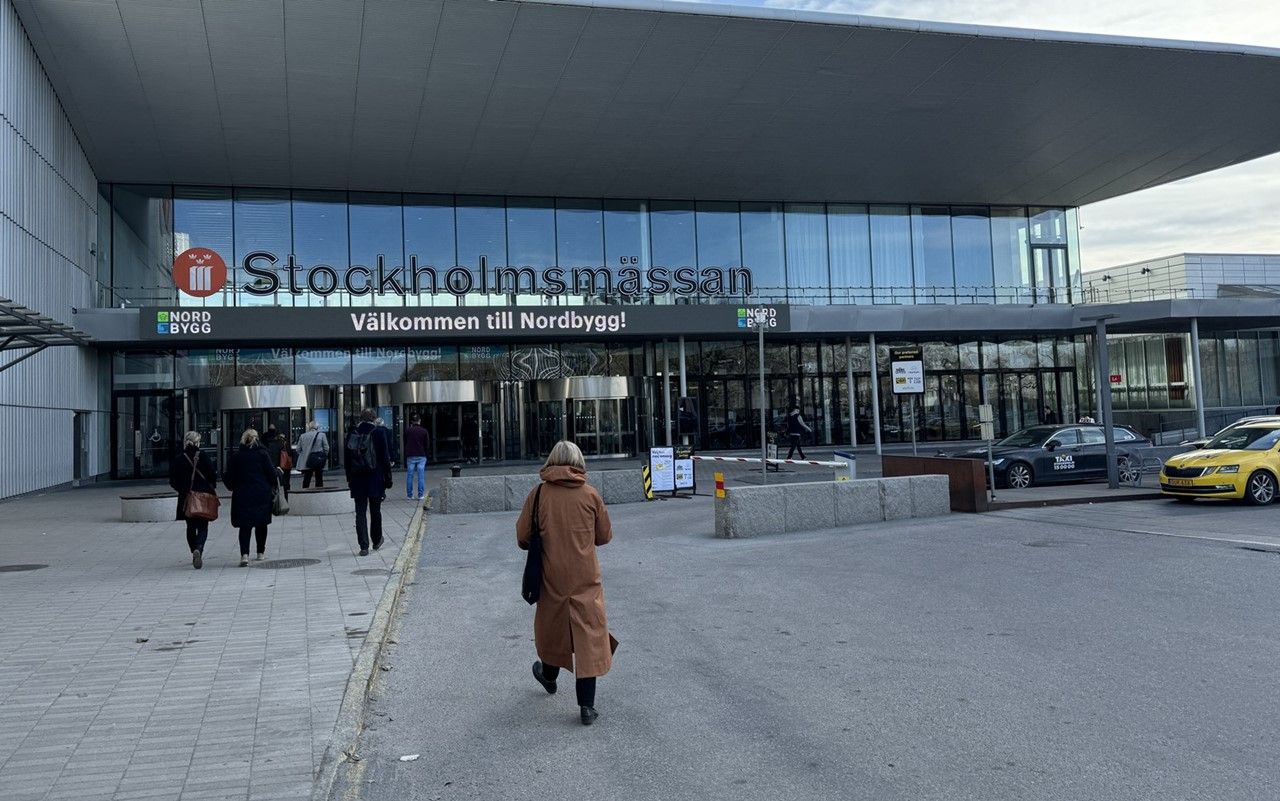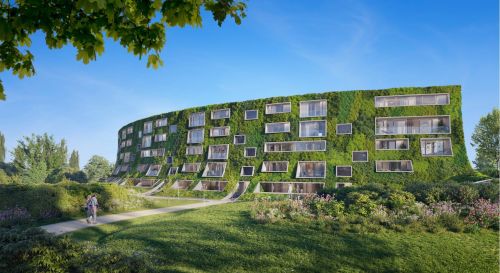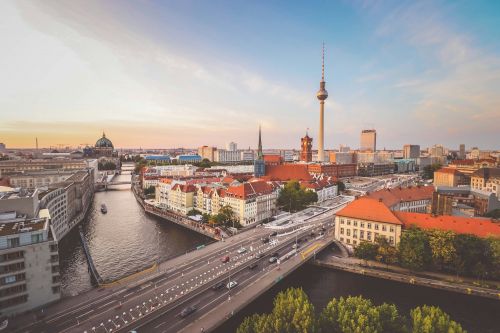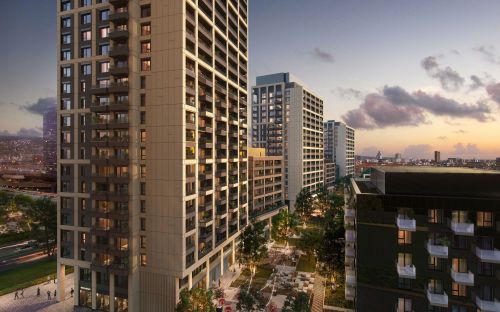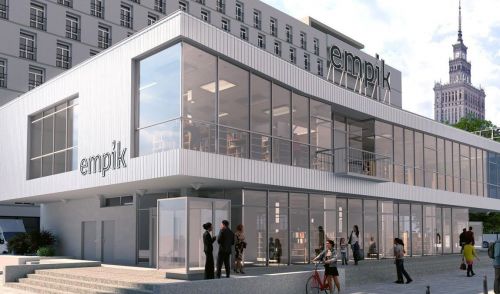Queen of the skyline
ArchitectureIt was in December 2007 that news about a certain skyscraper first started appearing on the front pages of Polish newspapers and magazines. It wasn’t some controversial project that had attracted media attention, but rather that yet another A-list architect of world-renown had been chosen for a new project in Warsaw. Zaha Hadid finally took her cue from her peers Daniel Libeskind and Sir Norman Foster, and presented her Warsaw Lilium Tower project. “I visited Warsaw many years ago. I don’t think the Palace of Culture – a landmark Varsovian building that everyone criticizes – is ugly. In fact I like it,” Zaha Hadid said during a dinner she hosted at the Marriott hotel, shortly after her arrival in Warsaw at the end of May. Despite a busy schedule dominated by meetings with investors and city officials, combined with a short trip around the city, Zaha Hadid still managed to find a few minutes to talk to a select group of journalists, including Mladen Petrov from ‘Eurobuild CEE’.
Once it was announced that you had won the competition for the design ofLiliumTower inWarsaw, some commented that a new landmark had been born. Is this your mission – to create iconic buildings?
Zaha Hadid:Well, while working on this, and every other project in fact, we are not thinking: „We need to create a new landmark for that city!” Right now we can see fierce competition between different cities, and this can only be a positive thing – that cities are becoming more contemporary in terms of architecture and I am glad I can be part of that process; but again, my goal has never been to create a landmark. If you look at Chicago in the 60s or New York, there are some really great buildings that over the passage of time turned out to be iconic, but they were not planned as such. I think it would be very interesting to see what is going to happen to the contemporary buildings which are now being developed, 20-30 years from now. I am often being asked what is more important for me – doing symbolic or more utilitarian projects? The truth is that you can actually do both at the same time. There is no clear division – no architect thinks “I am going to do a symbolic, but stupid project”. Whatever you do, it still needs to be both of a high-quality and capable of being utilized.
No matter how busy you are with current projects, you still find time to teach. How would you like your students to be – more like artists or more like engineers?
Zaha Hadid:That’s easy – I just want them to be architects, people who have the ability to create space and think on numerous levels. An engineer is responsible for the structure, while the artist expresses their fantasies. I am not saying that an architect shouldn’t also be an engineer and an artist too, but space organization is a different thing. You need to be an architect in order to manage that. An architect is also constantly thinking up ideas and concepts, and this requires great discipline. The most crucial thing that I want my students to bear in mind is to come up with ideas.
What was the idea behind your first Polish project then?
Zaha Hadid:In this case it was about coming up with a project that kind of sinks into the plaza. We wanted to create a high-rise building, which somehow resembles a flower. Please also pay attention to how the building gently expands and shrinks again. Of course it is very important for every project to work with the surrounding environment. I don’t know how people are going to react to the project – my task as an architect is to contribute to improving the look of the city. Some projects are being accused of not complementing the city they are being built in. But cities need to develop and avoid stagnation. TakeVeniceas an example – it certainly is a very beautiful city, but it is not moving forward. It has been turned into a prime tourist attraction at the price of losing its soul. I think European cities need another approach. Preservation is very important, but also we should add new things. Some people seem to believe that every change is for the worse, which is not entirely true.
And yet, people, especially here in CEE, seem to be afraid of the new, using the old argument that “the building simply doesn’t fit in”…
Zaha Hadid:I understand that, but we also put a lot of effort into our preliminary research. This research is to ensure that we understand the surroundings and the specifics of the area we are about to start developing. However, there is no precedent here, about who will decide what fits in and what doesn’t. As an Iraqi living inLondonI don’t necessarily understand the idea of fitting in. But we can’t simply stop the construction of high-rise buildings just because some think they don’t fit in. When rejecting contemporary projects one should also think about the future, taking into consideration that the building might have a great potential to be something more than just a building.
In a rapidly changing world, in which new technologies are making our life easier, what is the role of the architect as their job also seems easier nowadays? We can build virtually anything…
Zaha Hadid: It is not easier to build these days – it is just easier to make people accept the idea of the project. Our work today still requires a great amount of hard work – there is still incredible diligence involved. Yes, the soul of the city as such is very important, but there are also so many things involved in such a large-scale project. The role of the architect hasn’t changed. The technology, however, now allows you to develop bolder ideas. Nevertheless, I must agree that we are living in very interesting times for architects.
You have already mentioned that you likeWarsaw, which some perceive as an unattractive city. You also have upcoming projects in cities such asVilnius andBudapest. Can an experienced architect like you learn something new here?
Zaha Hadid: Of course I can. Every single little thing has an impact on me – even the language. Warsaw for example is very different and in a way very unique. Wherever I go I learn something, so it is not a matter of being a very experienced architect.
You were also the first woman to receive the most prestigious architectural award, the Pritzker prize, in 2004. How is it today – is it still the case that being an architect is mainly a man’s job?
Zaha Hadid: It is worrying that no woman had received the Pritzker prize in the 25 years of the competition before I won it. There have been lots of women helping men to win the prize, though. I think that it is still very difficult to be a woman in architecture on many levels. Why is that? Women do suffer from prejudice at work – and not only from male architects. As a university teacher, I can say that over the years a lot of the best students were female. However, I think things are already starting to change quite a lot – the generation in their 30s and 40s is quite different. They are very active.
Well, the media often describe you as the queen of architecture. Has that and being such a successful and internationally recognized architect made a great difference to your life?
Zaha Hadid: I wish it had, but the answer is no. Frankly speaking, my daily life is really hard. Having to work on so many projects, I don’t really have the time to sit down and think “Ok, Zaha, you are the queen of architecture”. It’s a good thing that I really love my job, so I enjoy everything I do. I love it that I can see so many places, look for inspiration and add something new to the cities I am working in. I also love the chance to import inspirations and influences – we are now being given the opportunity to take inspiration from one end of the world and use it elsewhere, thousands of kilometres away. It is crucial to think afresh, which is getting to be really difficult as everything seems to have been done before. You really need to dig deeper, and then you find thousands of possibilities you hadn’t imagined before. And that is the really exciting thing about my job. ν









